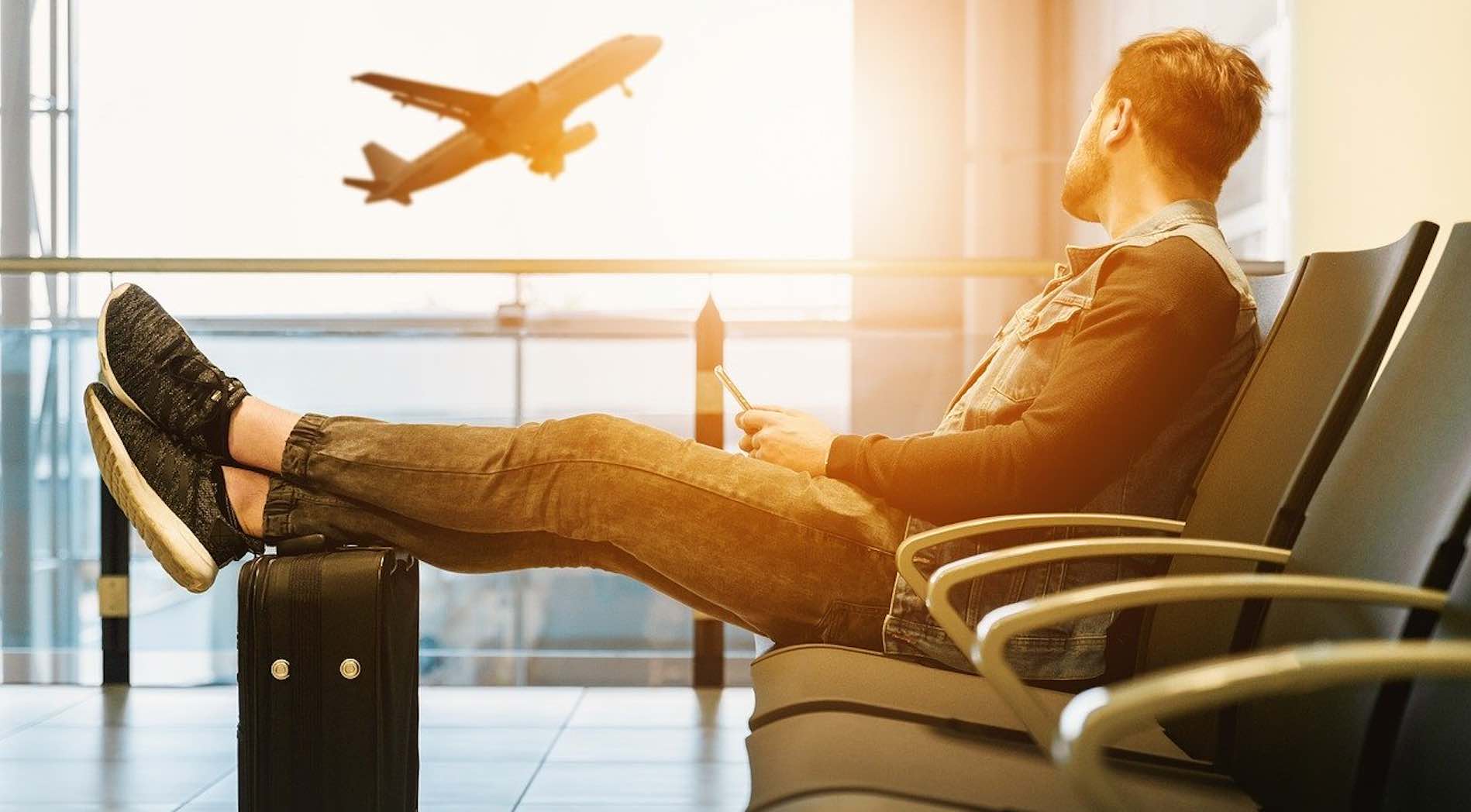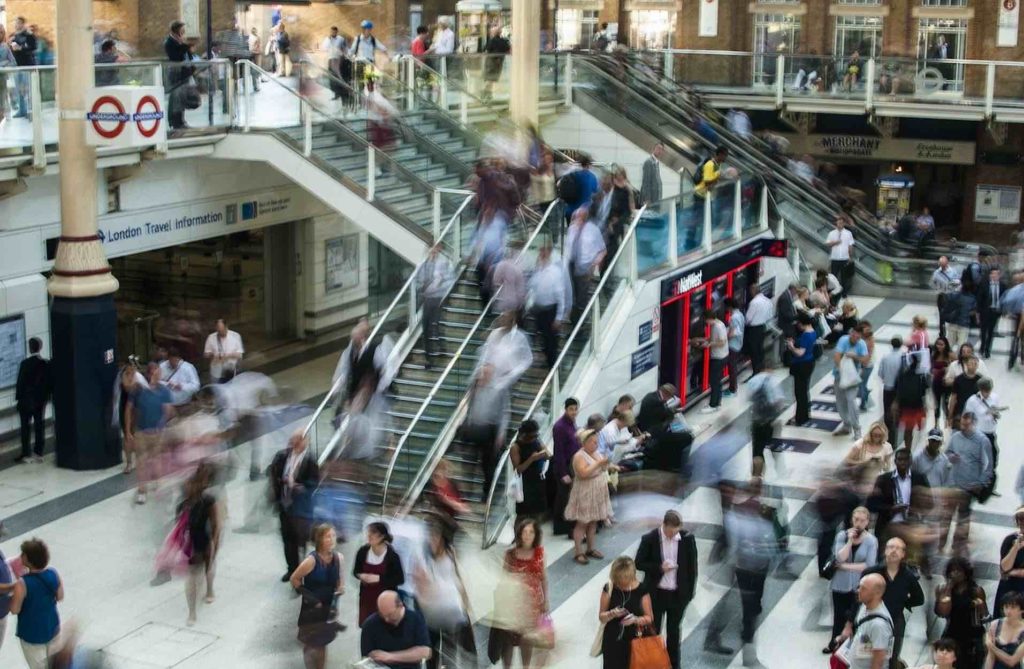Imagine the following journey by train: The train you are boarding is crowded. A busy-looking young woman in a business suit sits down in the empty seat opposite you. You already don't anticipate anything good. And indeed: as the train departs, she takes her smartphone out of her pocket. She checks SMS and emails and sends messages in turn. She listens to a voice message – so loud that at least the passengers in front of and behind you can hear it. Then she takes her laptop out of her bag and puts it on the table between you. She gives the impression that what she does is very, very important. With her perfectly painted fingernails, she strums the keyboard like there's no tomorrow. Then her smartphone rings … Meanwhile you're feeling increasingly uncomfortable and irritable. You look around: there are no more free seats – instead, the few passengers who are not also engrossed in their smartphones look exotic. Eventually you can't take it any longer. You get up, take your bag and stand in the exit area between the compartments. It's at least another hour till you will arrive at your destination, but it's quieter here and better than having to endure the clicking and jingling around you. Do you know such situations? Then you may be one of those people who are described as highly sensitive – and most of whom are also sensitive to electrosmog.
In addition to acoustic and visual stimuli, electromagnetic radiation can also trigger discomfort. Highly sensitive people are significantly more affected than the average population. Less sensitive people do perceive noises or visual stimuli, but are often able to ignore them as "insignificant". Highly sensitive people are far less successful in this and also have very fine antennae for electromagnetic radiation. Electrohypersensitive people who suffer from headaches, nausea and insomnia due to the radiation emitted by mobile phones, computers, routers and the like are often viewed as hypochondriacs. The complaints of those affected are quickly dismissed as imagination or nonsense.
Most of those affected will have discovered by accident that they belong to the electrosensitive group of people. I myself, for example, came to this realization when – after months of insomnia and constant migraine attacks – I went on a short vacation in the Upper Harz Mountains. At almost 1000 meters altitude, I suddenly felt better. I was able to sleep at night and my headaches were all but gone. I gained new strength. When I heard the landlady of my holiday apartment complain about the poor internet service in the region, I became aware of a possible connection. There was no WiFi in the holiday apartment and the cell phone network in the Harz Mountains was as patchy as Swiss cheese at the time. At home I tested this connection again: I found a direct relationship between my well-being and the electromagnetic radiation around me. Even turning off the WiFi on my router at night helped me sleep better. I looked for a new apartment in a small village. And guess what: I'm feeling fine there ... Most electrosensitive people ask themselves before a holiday or business trip, which means of transport is the most relaxing way to take to leave the (more or less) safe zone?
As can be seen here on the website, there are hotels and guesthouses in tempting holiday regions – and even on the way there, ideally suited for stopovers – that have adapted to the needs of electrohypersensitive guests offering WiFi-free zones. However: How do you move from A to B in such a way that the holiday trip is relaxing and that afterwards you don't need a holiday from your holiday instead?

Travelling by Airplane
For destinations within Europe, a trip by plane can be described as a "short process" at best: the departure and arrival halls of most airports are gigantic WLAN zones - it's impossible to escape. Most airlines also offer in-flight WiFi to passengers. The only advantage: With a flight duration of two hours, for example, you can expect to be out of the radiation bombardment after a total of four hours.
However, flying not only harms the environment, but can also cause health problems for passengers and crew: The aerotoxic syndrome, which is the result of inhaling contaminated cabin air and is relatively unknown in the documentary film "Ungefilteret eingeatmet (Unfiltered inhaled)“ is illuminated. With the exception of the Boeing 787, Dreamliner, the cabin air of a commercial aircraft is "tapped" directly at the engines and fed into the interior via the air conditioning system. In the event of a seal failure, chemical additives such as TCP, which are mixed with the turbine oils or the hydraulic fluid and evaporate on the hot engines, can also get into the cabin via this route. According to Lufthansa, on one in 2,000 flights a fume event involving poisoned cabin air occurs. Based on this number, the “Independent Flight Attendant Organization” (UFO) assumes “one incident per day in Lufthansa’s short-haul fleet”.
Even if every single incident is one too many, it must be added that by no means all fume events are detected and reported and that even in normal operation mode small amounts of these toxic residues can escape and get into the cabin air. For MCS and HPU sufferers, poor detoxifiers, even the slightest contamination in the cabin air can be harmful. The pilots' association "Cockpit" advises passengers to take note of witnesses in the event of an incident and after landing to have a doctor test them for TCP residues immediately.

Travelling by Train
On the continent, the train may offer an alternative means of travel - in times of the pandemic, booking a private (sleeping car) part may be possible. The train is recognized as an ecological form of travel, but what about electrosmog pollution? On the one hand there would be the electrics in the wagons and possibly the electromagnetic fields from overhead lines, but on the other hand mobile communications on the train. Most of our readers are probably aware that the load emanating from mobile phones increases during journeys by car, bus and train, since the device is constantly searching for the relevant transmitter between the individual mobile radio transmitters. In order to counteract this effect, a stable mobile phone signal in the moving train would basically make sense - even more useful (but not realistic in the context of the direction that providers and users have taken) would of course be sockets for telephone and internet in all seats, to which the end devices would only have to be plugged. Instead, Deutsche Bahn offers free WiFi on its trains based on the “WLAN for everyone” principle.
What if you want to travel by train, but without WiFi radiation and clicks and pies from the neighboring seat? For example, are there quiet cars without WiFi? We asked and received the following answer from Deutsche Bahn's customer dialogue:
“In recent years, we have equipped the ICE trains with cellphone repeaters and WiFi. Of course, these measures primarily serve to improve data exchange for our customers. However, they also help to greatly reduce mobile phone radiation on the train, as this avoids the Faraday cage effect. The relaxation areas also generally have WiFi and some also have mobile phone repeaters. We assume that in the future most customers will use WiFi for data transfer.
We see ourselves as a mobility service provider that combines economic with social and ecological goals. Our ICE trains are very energy-efficient and mainly use green electricity - which is why we are already the most environmentally friendly means of transport in Germany. Our goal is to win as many car and plane passengers as possible on our trains to make the world a little more environmentally friendly.
To do this, we must offer products that meet the needs of most people and cannot ignore market trends. The vast majority of our customers want to be able to communicate with the outside world while traveling. The useful use of travel time for working, reading, and communicating is an important competitive advantage over our competitors by car, plane, and bus. On the one hand, we will expand the quality of the Internet and mobile communications for our customers according to their needs, while keeping radiation exposure as low as possible.
On the other hand, we will meet the needs of many customers for a quiet and relaxed journey by further strengthening the rest areas. Unfortunately, we currently do not see any significant demand from our current and potential future customers for an area in which the use of mobile devices is prohibited.”
For long-distance journeys, the train is just as unsuitable for electrosensitive travelers as the plane - only routes on which historical slow trains operate, such as the Tren de Sóller, which connects Palma de Mallorca with Sóller, are pleasant exceptions.
Travelling by Bus
Long-distance buses are – measured in terms of greenhouse gas emissions per passenger kilometer (compared to planes, trains, local public transport and cars) – the most ecological means of transport. For bus trips, the load depends not only on the route, but also on whether WiFi is available on the bus and whether fellow passengers use their smartphones to while away the time. This means that higher mobile phone loads are to be expected in a Flix bus that commutes on the A9 between Munich and Berlin than on a bus trip through rural areas of a provider for sustainable travel.

Travelling with your own Car
In Zeiten von Corona sind Urlaubsreisen mit einem Camper oder Wohnmobil natürlich ideal. Viele hoch- und elektrosensible Reisende haben aus den zuvorgenannten Gründen jedoch schon zuvor Reisen mit dem eigenen Pkw präferiert: Kein mobiles Endgerät, das auch dann strahlt, wenn man unbedingt eine reizarme Umgebung braucht. Jederzeit die Möglichkeit vom geplanten Weg abzuweichen, weg vom Verkehrschaos, dem Lärm, den Abgasen, vom superausgebauten Mobilfunknetz. Weiter ins Grüne. Mehr Ruhe. Immer dem guten Gefühl nach … Aber auch Auto ist nicht gleich Auto: Verschiedene Untersuchungen der gängigsten Pkw-Modelle auf E-Smog-Belastung zeigten bereits 2002 Magnetfeldbelastungen zwischen 100 und 20.000 nT – in Luxuskarossen mehr als bei Kleinwagen, bei Handschaltgetriebe weniger als bei Automatikgetriebe. Je weniger Elektronik verbaut ist, umso besser …
Precautions against mobile phone radiation when travelling
Various manufacturers have already developed a large number of aids for electrosensitive people, which can also be helpful when travelling. In addition to electrosmog measuring devices, which can also be used very easily by laypersons - such as the small, handy Esmog spy - there are various products made of radiation protection fabric:
- radiation protection canopies for the bed,
- shielding bedding,
- shielding clothing (hats, shirts, blouses, hoodies and underwear).
All of these items help to reduce exposure to radiation while traveling and sleeping – and to regenerate.
But let's be curious how long it will be before not only hosts realize that there is a growing number of people who want a holiday without electrosmog and mobile phone radiation, but also the Deutsche Bahn! In the meantime: what are your tips for health-friendly travel? We'd love for you to share them with us and other readers.

